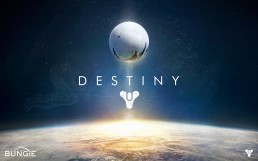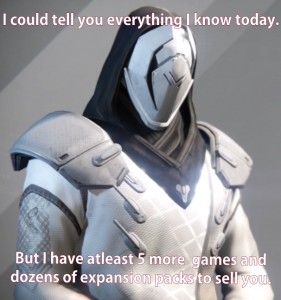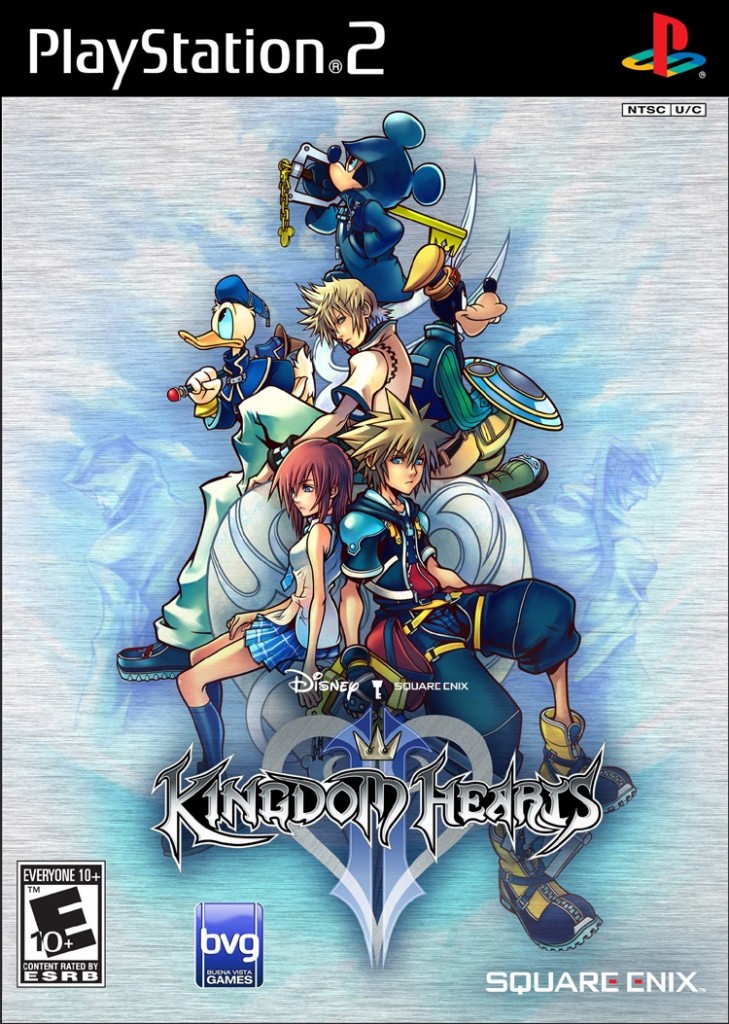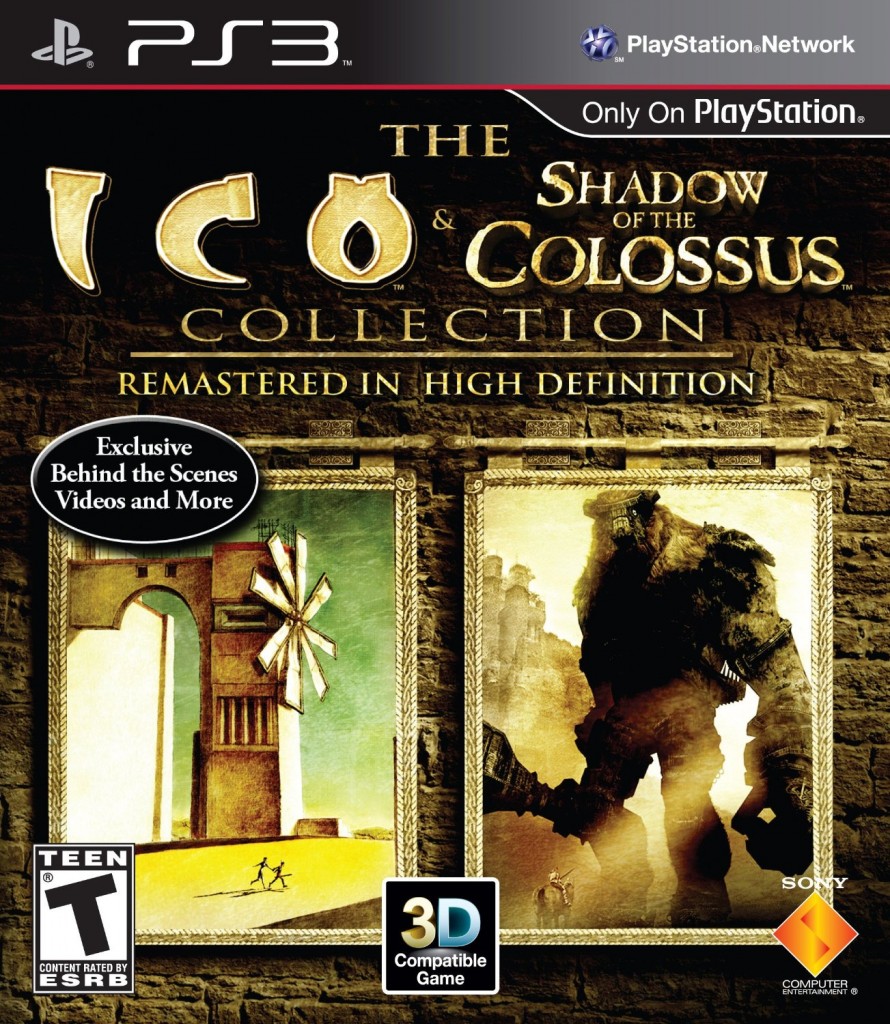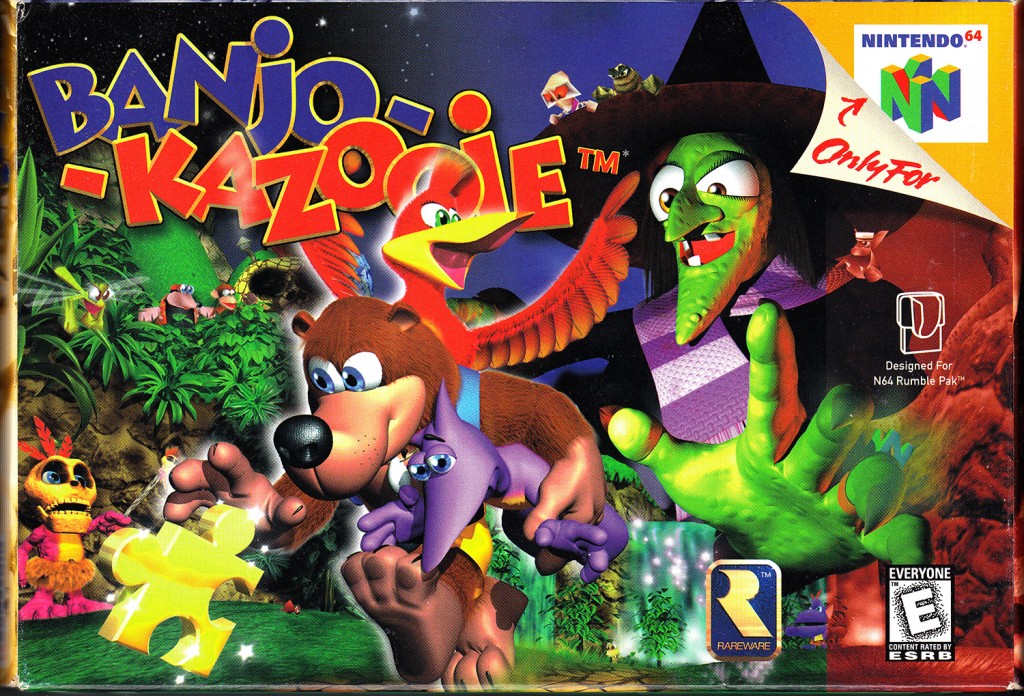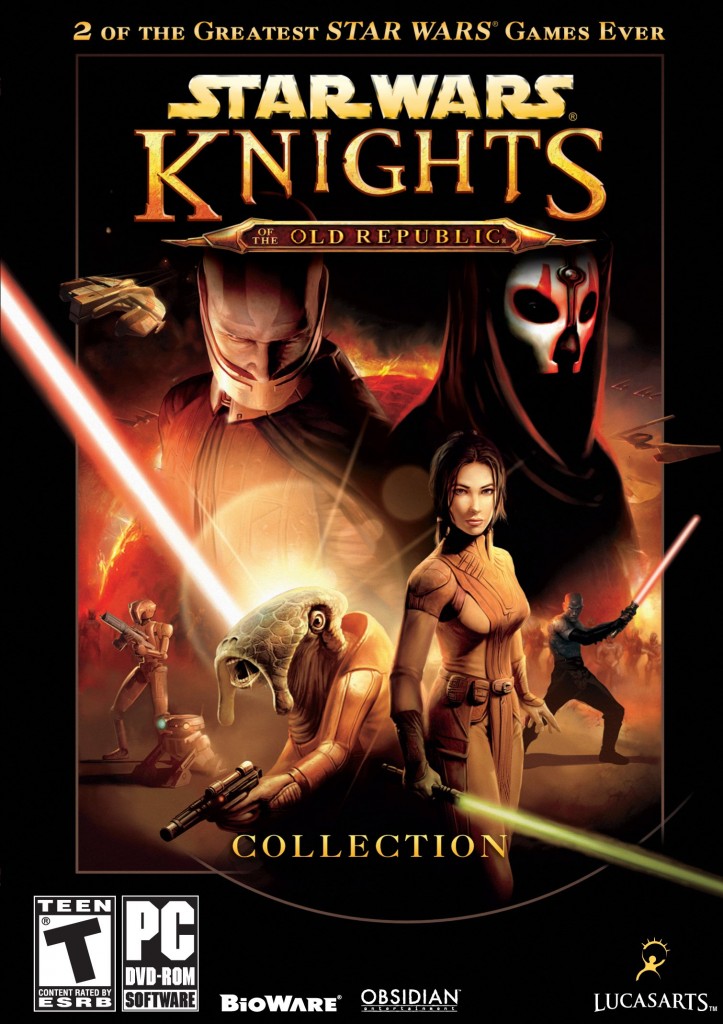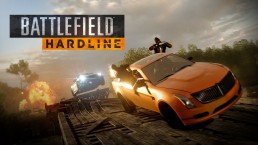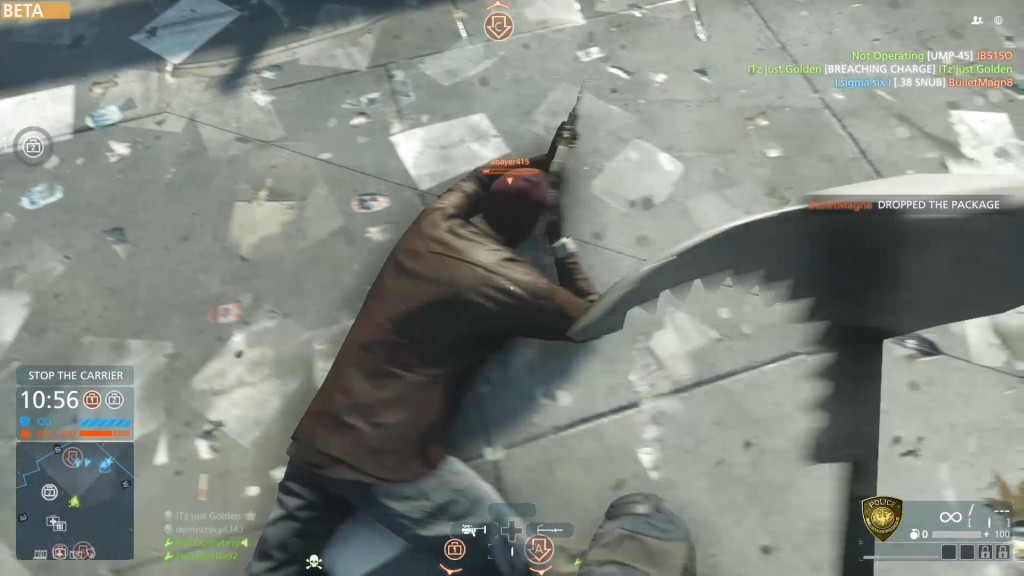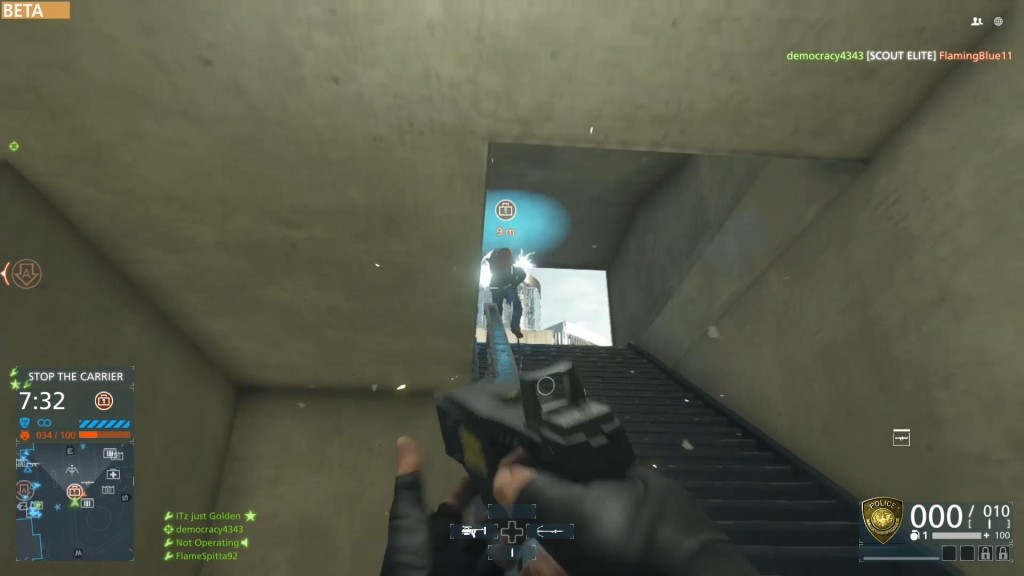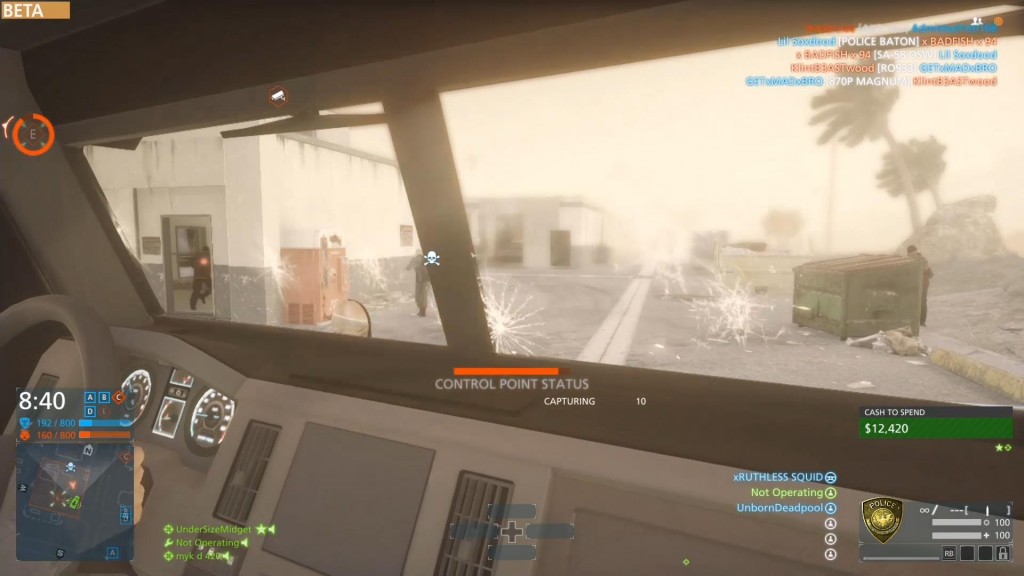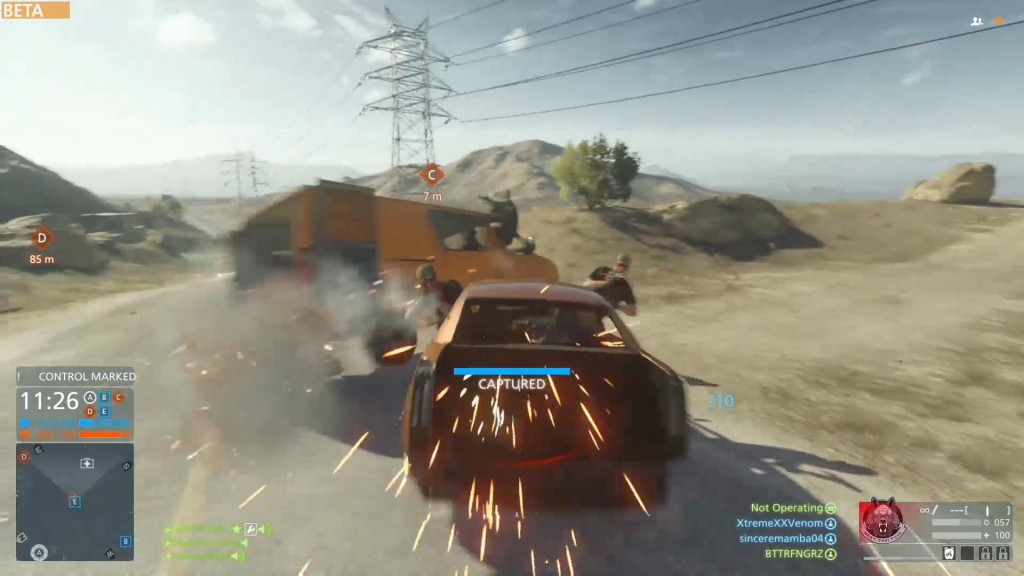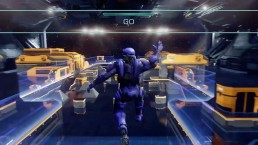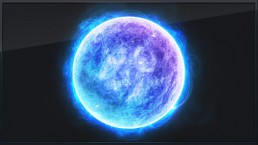Gaming Analysis
Destiny - The Taken King Leak and Why We Shouldn’t Care
Ahhhh, Destiny. The last game you’ll ever need… since you won’t have money or time left to buy or play any others. Late last night, details for Destiny’s third expansion pack, The Taken King, were leaked to Kotaku.
New features for the expansion include a new raid, PvP maps, and most notably, a third elemental subclass for each of the game’s three classes. These subclasses will consist of “an electrical storm for Warlocks (arc); a gravity bow for Hunters (void); and a flaming hammer for Titans (solar).” Sounds cool to me!
“What’s the price of admission to partake in this new endeavor?” you may ask. Only $40. “But Michael,” you reply, “Didn’t I already pay $60 for the full game and $35 for the season pass?” Yes… yes you did. “This DLC should be covered by the season pass then, right?” No… no it isn’t included in the cost of the season pass.
If you aren’t concerned or confused by now, let me help you with the math. Assuming you’re still playing Destiny now, after purchasing the game when it launched in September 2014, you will have most likely spent $60 for the retail copy of the game and $35 for the season pass (or $40 if you bought the two already released DLCs separately).
Conservatively, that means you would have spent at least $95 on Destiny during its first 9 months of release. Throw in an additional $40 for The Taken King on its expected release date of September 15th, 2015, and you will have spent a total of $135 on Destiny over the first 12 months of its release.
This may not seem like a lot of money for the value when averaged out over the games’ life for those 12 months ($11.25/month), but it most certainly wouldn’t feel that way if you are still hoping to buy and play through the other new games that have been and will be released.
Compare this cost to a game like Battlefield 4, where purchasing the Premium Edition for an extra $50 nets you every DLC the game releases (which, as of this writing, is comprised of five expansions plus some other features). New maps, guns… the works. That’s a pretty comparable cost to Destiny and its DLC if you bought the Premium Edition of Battlefield 4 at launch ($110 total).
However, there’s one important distinction to make. You don’t actually need a Battlefield 4 Premium membership to keep playing and enjoying Battlefield 4. The experience you get from the original maps is just as good as those in the DLC. Alternatively, in Destiny, you have to buy all of the DLCs if you want to get new loot, level up, and participate in weekly events. Basically, you have to pay in order to keep up with the game.
It’s important to note that all of the information related to The Taken King is leaked and potentially subject to change down the road. If that’s the case, then my argument might be meritless. If that isn’t the case, and the leak is 100% accurate, then a terrible precedent is being set here and we must do something about it before this becomes endemic to the video game industry. All you have to do is something as simple as saving yourself $40: Don’t buy the DLC.
Evolve didn’t sell as well as Take-Two hoped it would (approximately 2.5 million units across all three platforms). After learning about the game’s extensive DLC plan and lack of initial content, gamers took a stand and spoke with their wallets in opposition of Evolve.
This happened to be so effective that the CEO of Take-Two, Strauss Zelnick, even mentioned that Take-Two has “come out of that experience reminding ourselves we have to have a strong single-player opportunity” and that “if there were something lacking, I would say it would be that it was probably a bit too multiplayer-focused, which we knew all along." We can only hope that gamers will come together again to vote with their wallets when The Taken King releases. If they don’t, paying $135 just to continue playing a mediocre game at best could become the industry standard.
As a once-proud member of the hype-train that was Destiny, I really wanted to like the game. And I did, right up until the time I was told by an NPC that they didn’t even have time to explain why they didn’t have time to explain an important part of the “story” to me.
That being said, I still played the game for a few more weeks. I ran the Vault of Glass a bunch, PvPed, farmed materials, and grinded my way to level 30. It was all great fun, until my gamer friends refused to join me and I finally realized I was basically playing a mobile game that was built for consoles. Unfortunately, if that doesn’t make sense, my fellow Guardians of the Light, I don’t even have time to explain why I don’t have time to explain.
5 Video Game Remasters We Actually Want
I don’t think I’m the only one annoyed by what seems like a new video game remaster being announced each week. ‘Remasters,’ ‘Collections,’ ‘Definitive Editions’, or whatever term publishers are coming up with to trick people into buying old games, have been flooding the market lately and more will inevitably be announced shortly.
Perhaps the most disappointing aspect of these remasters is that most of them haven’t been adding any sort of real value aside from simply upping the game’s resolution and/or framerate. Take the most recently released remaster, Dark Souls II: Scholar of the First Sin, for example. The game is a 1080p and 60fps version of Dark Souls II, complete with all three DLC packs from the game. That’s about it.
Sure, the Scholar of the First Sin increased the maximum amount of players in an online game from four to six and changed enemy spawn locations, but is that really enough to justify purchasing the game again if you already own it?
I know that there is some overlap here for gamers who missed out on playing certain games when they were released the first time around. However, the number of potential buyers who have never played the remaster is obviously much smaller when compared to the number before the release of the original game. Despite all of this, these kind of games must be selling well because, well, they keep on being made.
Does anyone remember in the early days of the PS4 and Xbox One, where if you owned a game like Battlefield 4 on PS3 or Xbox 360, you could upgrade to the PS4/Xbox One versions for as low as $10 for a limited time? That is essentially what you are getting now, a PS4/Xbox One version of the same game, except, in most cases, you are paying the full $60 price of a video game.
Fortunately, a few developers actually understand how to do a remaster right and actually give you the best bang for your buck.
Rockstar added the highly anticipated first-person mode to the PC, PS4, and Xbox One versions of Grand Theft Auto V, as well as some new missions, weapons, and vehicles.
State of Decay developer, Undead Labs, is offering a 33% discount on the purchase of State of Decay: Year-One Survival Edition to those who already own a copy of State of Decay on Xbox 360 or PC. The PC version of the recent Sleeping Dogs remaster is also worth mentioning, as the Definitive Edition on PC was only $30, or $15 if you owned the original game. Xbox One and PS4 versions were still $60, though.
Networking issues aside, the Master Chief Collection on Xbox One is the perfect example of a remaster done right. Not only could you play Halo: Combat Evolved on Xbox Live for the first time ever (when you could actually get matchmaking to work), but Halo 2 received the full “Anniversary” treatment as well.
Like the Halo: Combat Evolved Anniversary Edition which came out in 2011 for Xbox 360, the Master Chief Collection version of Halo 2 received a dramatic facelift. The resolution and framerate were bumped to 1080p and 60fps respectively, and every cutscene from the original Halo 2 was remastered and given stunning new cinematics by Blur Studio. There were also new hidden collectibles to find that dove deeper into the Halo lore in preparation for Halo 5. Additionally, six of Halo 2’s multiplayer maps were re-made entirely on the Xbox One engine by Max Hoberman (former lead designer at Bungie) and his current studio, Certain Affinity.
Combined, all of these features easily give you enough value to justify the full $60 retail price of the game. Oh, and let’s not forget that the Master Chief Collection also included remasters of Halo:CE, Halo 3, and Halo 4, as well as exclusive access to the Halo 5 beta.
All of these remasters have gotten me thinking of the games I would like to see re-made to play on current generation consoles, in a fashion similar to the Master Chief Collection. By re-made, I mean updated graphics, remastered cutscenes, and other unique features that would help warrant a purchase. I’m going to take the easy way out and imagine we’re in a perfect world where cost and development time on actual game projects would not be affected by creating these remasters.
Hot on the heels of the rumored Batman Arkham series collection, here are my top five choices for remasters that we gamers deserve and need right now:
1) Kingdom Hearts Collection – Kingdom Hearts 1.5 & 2.5 (Xbox One, PS4)
Few video games serve the purpose of uniting our inner child with our inner nerd better than Kingdom Hearts does. With Kingdom Hearts III now in development, a complete Kingdom Hearts collection released in the near future would serve the purpose of providing a refresher on the story (which spans a total of 7 games – 2 on consoles, 5 on handhelds), while attracting new gamers to the series, which originally launched in 2002.
Having all seven games in one place, with remastered graphics and cutscenes, would be a hard deal to pass up. Additionally, an Xbox One version released ahead of the Kingdom Hearts III launch (release date to be announced) would mark the first time a Kingdom Hearts game could be purchased for Xbox and would surely sell well. Interestingly enough, Kingdom Hearts 2.5 was just released on PS3 only in December 2014. Could a complete collection on PS4 and Xbox One follow soon after?
2) Marvel’s: Raven Collection – X-men Legends, X-men Legends II: Rise of Apocalypse, Marvel: Ultimate Alliance 1, & Marvel: Ultimate Alliance 2 (PC, Xbox One, PS4)
One of my favorite developers from the early 2000’s, Raven Software made a name for itself with the awesomely fun Star Wars Jedi Knight games. From there, Raven hit their stride with the X-men Legend and Ultimate Alliance games; top-down multiplayer action RPG’s. Diverse and expansive character rosters, combined with interesting stories and enjoyable gameplay, helped cement the series as a must-buy among Marvel fans and gamers alike.
Aside from Marvel Heroes and Lego Marvel, Marvel has been lacking in the video game department for years. Alternatively, DC has had bigger hits recently like Injustice: Gods Among Us and DC Universe Online. Throw together a collection of remastered versions of Raven's Marvel games, with some new exclusive characters and costumes added to the rosters, release it around the same time of the next big Marvel movie, and you might as well be printing money.
P.S. Before you start throwing things at me, the only reason why a Jedi Knight game didn’t make my list is because I already picked a different Star Wars series below. Also, I know Ultimate Alliance 2 sucked; I just threw it in the Raven Collection for completeness. You don’t have to play it if you don’t want to.
3) Team ICO Collection: Ico & Shadow of the Colossus (PS4)
Arguably two of the best adventure games of all time, Ico and Shadow of the Colossus are cult classics from the PS2 era. Even to this day, I don’t think I’ve come across another game that I thought was as gorgeous and atmospheric as Shadow of the Colossus was when I played it for the first time.
Now I know this collection has been done before, as evidenced by the box art above, but that was simply an HD remaster.
Ico looked great and Shadow of the Colossus pushed the PS2 to its technical limits when it came out a few years later. Can you imagine what these games would look like if they were completely remastered on a PS4 engine? I can’t. The thought of it is too beautiful.
Revealing the Team ICO Collection at this year’s E3 for a Holiday 2015 release would help strengthen the PS4’s weak remaining 2015 lineup, especially considering that Uncharted 4 has been pushed back to 2016. Hopefully Team ICO would be kind enough to add in some new developer diaries for The Last Guardian as a bonus feature in the Collection, which would help to ease fans concerns over the game’s prolonged development.
4) Banjo-Kazooie Collection: Banjo-Kazooie, Banjo-Tooie, and Banjo-Kazooie: Nuts and Bolts (Xbox One)
“Guh-huh!” It’s been almost 7 years since everyone’s favorite bear-with-a-bird-in-his backpack graced our consoles with his presence. It’s been even longer since he was actually in games as awesome as Banjo-Kazooie and Banjo-Tooie were. Nuts and Bolts was just okay, but it was missing a lot of the heart and sense of adventure that made the first two Banjo installments great.
Remastering the Banjo games for the Xbox One would then pave the way for a brand new Banjo-Kazooie titles to launch down the road. This would be a welcome addition to the Xbox One library of exclusives, which is primarily comprised of relatively dark games with lots of shooting at the moment.
Recently, when Phil Spencer, Microsoft’s Head o’ Xbox, was asked about the possibility of Banjo being voted into Super Smash Brothers for Wii U, he had this to say: “I think it would be cool if Banjo was in the next SSB DLC. We've worked with Nintendo on Rare IP before, no issues.” If, by some miracle, Banjo gets enough votes to make it into Smash as DLC, it would be a huge win for Xbox. They would be dumb not to capitalize on that success by having new Banjo games available to play.
5) Star Wars: Knights of the Old Republic 1 & 2 (PC, Xbox One, PS4)
Star Wars: Knights of the Old Republic (KOTOR) was one of the first RPG’s that I ever played. The game boasted a great story filled with twists and a memorable cast of characters and companions alike. Who could forget HK-47 in all of his meatbag hating glory?
KOTOR made a lasting impression on me due to the fact that my decisions actually had an impact on the outcome of the game’s story. I could be the Jedi that I wanted to be, which felt pretty damn cool, especially when you got to build your own lightsaber and explore the galaxy in the Ebon Hawk, the precursor to the Millennium Falcon.
I know I’m not alone when I say that a remastered version of KOTOR 1 & 2 would be my top choice out of all of the games on this list. Now I don’t want to say this remaster will never happen, because I never deal in absolutes. That being said, this remaster will probably never happen. We would certainly be more likely to see a Mass Effect Trilogy remaster (“The Shepard Collection”?) before a KOTOR remaster, but then again, you’re never supposed to tell me the odds.
Well, there you have it. The top 5 video game remasters I would willingly buy and play. Do you agree or disagree with my choices? What video games would you like to see remastered? Be sure to let us know by leaving a comment below or on our Facebook and Twitter!
Battlefield Hardline – Or Flatline?
I’ll admit it. I am a bit biased when it comes to the Battlefield series. Playing Battlefield 2 on PC opened my eyes to the world of large-scale combat in an FPS, in all of its dolphin-diving, C4-chucking glory. Not only was I drawn in by the stunning graphics and beautifully designed multiplayer maps, but I could not get enough of the freedom (and subsequently, chaos) that the multitude of weapons, vehicles, and gadgets at my disposal allowed. Unfortunately, these large-scale battles contribute to perhaps the biggest complaint gamers have with Battlefield: the maps are too big and the matches last too long, which leads to boring gameplay experiences. With the imminent release of Battlefield Hardline, a cops and robbers twist on the typical military warfare that the Battlefield series is known for, EA’s Visceral Games look to combat that criticism by developing “The Fastest Battlefield Ever.”
Multiplayer
As mentioned above, Battlefield Hardline pits cops against robbers at the center of the conflict this time around. While it might be a bit of a stretch to picture hordes of law enforcement officers and criminals waging war in the streets of Los Angeles, the change in setting led the way for some new features to be introduced in the game. First and foremost, player movement speed has been increased from previous Battlefield games. This modification, in addition to the inclusion of faster cars and motorcycles, was designed to help speed up the pace of multiplayer matches and get players back into the action quicker. Gone will be the days of endless wandering to find combat, just to get picked off along the way and be forced into doing it all over again.
In addition to new multiplayer modes like Heist and Hotwire, which you can check out highlights of in Not Operator’s first episode of Digital Ops here, Hardline added a slew of new weapons and gadgets. Hands down, my favorite weapon to use in the most recent multiplayer beta for Hardline, which came to a conclusion on February 9th, was the Taser. Despite the limited effective range, one direct hit on an enemy with the Taser will cause the poor soul unfortunate enough to be caught in your sights to convulse and light up like a human Christmas tree. More importantly, a direct hit with the Taser will count as a kill for you on the scoreboard, but will be considered a “non-lethal takedown.” If you manage to perform a non-lethal takedown on another player (the only other way to perform a non-lethal takedown is to successfully land a melee hit from behind), you will have a brief window to “interrogate” the target. Doing so will reveal the location of nearby enemies on your minimap, and as such, is a nifty little mechanic to have in the game.
Keeping up with the cops and robbers motif, instead of unlocking gear as you level up in previous Battlefield installments, Hardline will award you with cash for all of your in-game actions. Kills, captures, assists, and more will all net you with varying amounts of money which can then be spent on purchasing new guns, attachments, gadgets, melee weapons, and other customizable features such as weapon camos. Battlefield purists might be upset by this change, but the fact that all weapons and gadgets will be available for purchase from the get-go will help to put players on a more even playing field, and that is alright with me.
Levolution™, one of the best, and coincidentally hammiest, buzzwords of all time, makes its triumphant return in Hardline. First introduced in Battlefield 4, this mechanic alters the flow of a match by creating a dynamic gameplay change in a multiplayer map. For example, one of the two maps with ‘Levolution’ in the beta, Dust Bowl, set in a residential desert town (complete with meth lab), experiences a debilitating dust storm that impairs player vision and restricts the player’s line of sight. In the other beta map with ‘Levolution’, High Tension, players can cause a construction crane to crash down, bringing some chunks of buildings and a bridge with it. The mechanic is supposed to exist in every multiplayer map this time around, so I am curious to see the other ‘Levolutions’ Visceral came up with. Love it or hate it, ‘Levolution’ is a fun feature that switches up the typical gameplay experience, and I am glad it is making its way into Battlefield Hardline.
I also feel it is important to mention that while helicopters are returning in Hardline, jets will not be included in the game. Let’s be honest though… what sort of police department has a budget big enough for an F-18?
Single-Player
With the exception of the Bad Company games, the Battlefield series has not historically been known for the quality of their single-player campaigns (though I still believe the Battlefield 4 story was far better than Call of Duty Ghosts, which was released around the same time). DICE, the original developers behind the Battlefield series, passed the torch for Hardline on to Visceral Games, the studio that created one of my favorite horror games of all time, Dead Space. Nevertheless, many questions still surround Hardline’s single-player campaign, as not much has been seen from story mode aside from an entertaining 12 minute gameplay trailer released at Gamescom last August. As we have all become well aware of by now, trailers are one thing and the final product is another.
The campaign, which is being advertised as an engrossing “episodic crime drama” along the lines of Miami Vice, also promises a variety of gameplay options granting freedom over how to deal with enemy encounters. Want to handle every situation guns blazing? Go ahead. Prefer a more subtle touch? Grab a suppressed gun or a Taser and pick off the bad guys one by one on your way as you sneak to the objective. While this is nothing mind-blowingly cutting-edge for a video game, having the freedom to play to your preferred gameplay style helps to alleviate the linearity most FPS campaigns are known for. Considering that there is a talented development team behind the wheel, especially one that is particularly good at atmospheric storytelling, I am remaining optimistic that Battlefield Hardline’s story mode will not just be seen as a chore to get more achievements/trophies.
Should Hardline Have Just Been DLC?
The primary grievance gamers seem to have with Battlefield Hardline is that the game is being released as a $60 standalone game, whereas many feel that it should just be released as a downloadable expansion for Battlefield 4. Some Battlefield fans were even vocal enough to start a petition to try and make that happen, though it didn’t work. Another (deserved) criticism plaguing the Battlefield franchise in recent years is that the games have been riddled with glitches and bugs. The most recent installment in the series, Battlefield 4, launched with debilitating matchmaking, gameplay, and UI issues which basically rendered the game unplayable until the problems could be patched.
Looking to learn from their sins of the past, EA recently concluded the second beta test of Battlefield Hardline, which was comforting since Hardline was originally scheduled to launch on October 21st 2014. In an effort to try and win back some fan confidence, and possibly prevent a few lawsuits this time around, the game was delayed to 2015 in order to allow the developer more time to “push Hardline innovation further and make the game even better.” In addition to improving the quality of the game, this delay also helped to spread the gap between the release of Hardline and Battlefield 4, which came out at the end of October 2013. It is reassuring to see that EA is not forcing the Battlefield series into becoming an annual release franchise, like Call of Duty and Assassin’s Creed. This will hopefully more allow for more attention to be spent focusing on overall game quality rather than just pumping out the next iteration of a game to try and make a quick buck.
Battlefield will always hold a special place in my heart. I enjoyed my time playing in the multiplayer beta, and the story mode appears to be interesting. With no additional FPSs coming to market for a while, Hardline might be worth picking up. However, will Battlefield Hardline succeed in being the adrenaline shot to the heart the series that it is trying to be? Find out when the game launches on March 12th for EA Access members (Xbox One only), or March 17th for PC, Xbox One, PS4, Xbox 360, and PS3.
Evolve – The Next Evolution of Multiplayer?
I remember the first time I played Evolve. At Comic Con last year, I braved the cosplaying hordes and made my way over to the Manchester Grand Hyatt to check out the Xbox Lounge and play some of the exclusive game demos within. When I walked into the Lounge, my attention immediately focused in on a large poster in the corner of the ballroom; a monstrous mark in the mud eerily reminiscent of the infamous T-Rex footprint from Jurassic Park, with just the phrase “EVOLVE” displayed above. I sped my way over to the demo area where I was greeted by a friendly team of the game’s developers, Turtle Rock Studios: “Do you want to play as the Monster?” I smirked, grabbed the controller, and proceeded to mercilessly eviscerate all four of the human-controlled hunters as the Cthulhu-like creature known only as Kraken. Sadly, during the time I’ve spent playing Evolve in the Big Alpha and open beta, and due the recent controversy over the game’s downloadable content, nothing has come close to matching my excitement since that first match back at the Xbox Lounge.
Evolve pits a team of four hunters, each with their own unique skills and weapons, up against one player-controlled monster in “asymmetrical multiplayer” battles. This means that the different teams, the hunters versus the monster in this case, have vastly different abilities at their disposal.
Player Types
The hunters are comprised of four classes, Assault, Support, Trapper, and Medic, and each have four unique skills to use, including a firearm. Monsters, which also have four distinctive powers, kill and eat AI wildlife in order to gain extra armor and eventually evolve, which endows the creature with more health and increases the damage of their abilities. Evolve was flawlessly described as “an intense game of Cat and Mouse where after enough cheese, the mouse can eat the cat.” This is Evolve at its core.
Environment
When the game launches in February it will have four multiplayer modes that span twelve maps. The maps add some diversity to the gameplay by throwing environmental hazards at the players in the form of both passive and aggressive AI wildlife, carnivorous plants that will swallow hunters whole, and more. Essentially, these threats were designed to add another element for the players to worry about on top of the hunter-monster battle. However, once you have played the maps and learned what and where these hazards are, as well as how to avoid them, that element of unpredictability is completely removed from the game. This just returns the players to the basic find the monster/kill the hunters gameplay, and the environmental threats become more of an annoyance than something that adds value to the game.
Game Modes
The four multiplayer gametypes are:
- Hunt – The basic ‘hunters versus the monster’ mode
- Rescue – The hunters have to revive and escort five AI human survivors to evacuation sites before the monster can kill five survivors
- Nest – The hunters have to destroy six monster eggs spread throughout the map within ten minutes, and the monster can hatch eggs to create monster minions to fight with
- Defend – A MOBA-like mode where a fully evolved monster and waves of monster minions attempt to destroy two generators before finally attacking a ship full of survivors.
It is important to note that despite the game modes having different objectives, they can all be ended immediately if all four hunters are killed by the monster, or if the monster is killed by the hunters. From a gameplay perspective that decision makes sense, but it detracts from the value of playing modes other than Hunt, due to the fact that every other game type is basically just another Hunt match with an added objective. There has been no confirmation from Turtle Rock that they are working on new gameplay modes for Evolve, which could really hurt the replay value and cause gamers to get bored of the game quicker than anticipated.
In addition to the four modes listed above is Evacuation, Evolve’s self-proclaimed “dynamic campaign.” However, aside from an introductory trailer that scratches together the surface of a story for the game, Evacuation simply strings together the four basic game modes over five multiplayer matches called “days,” culminating in a final round of Defend. The twist to Evacuation is that the winning side of each match gets some sort of advantage for the next round. For example, if the hunters win, in the very next match there may be some auto-turrets that attack the monster, and if the monster wins, there could be a large poisonous gas cloud that damages hunters when they are close to it. According to Turtle Rock, there are over 800,000 possible scenarios created by these advantages. However, the advantages merely result in another aspect to keep an eye out for in a match, not unlike the environmental hazards mentioned earlier. Even more disappointing here is that Turtle Rock blanketed one brief trailer over the four multiplayer modes already in the game, added some more hazards on top of the preexisting ones, and decided that was good enough to comprise Evacuation’s “dynamic campaign.” Calling it so is extremely misleading to the average customer, especially if they are on the fence deciding whether or not to pick up Evolve, notice the words “dynamic campaign” written somewhere on the back of the box, and buy the game thinking it has some sort of story mode. It does not.
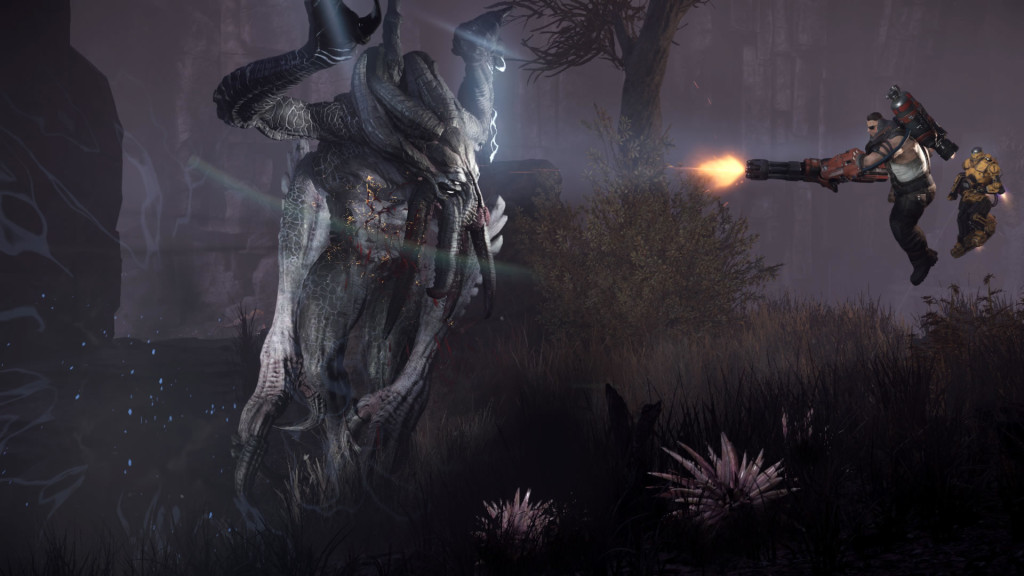
Downloadable Content
Evolve will ship with twelve maps, twelve hunters (three characters per class), and three monsters. Turtle Rock recently announced that the fourth monster, Behemoth, will be available for download in the spring for free if you pre-order the game. Conversely, if you do not pre-order Evolve and use the downloadable Behemoth code before midnight on the game’s release date, the only way to acquire Behemoth will be through a $14.99 purchase.
Additionally, if you have any interest in acquiring new hunters down that road, the Hunting Season Pass offers four new hunters and three monster skins that will set you back $24.99, but would retail at around $30 if all items within sold individually. Compare these prices to Destiny, for example, which sold its first “expansion,” The Dark Below, for $19.99. The price appeared to be pretty steep for just a handful of new story missions, a few Strikes, and one Raid, but it is quickly starting to look like a better deal compared to what’s happening with Evolve. Keep in mind, the Hunting Season Pass and Behemoth DLC only cover the first wave of downloadable characters. Any other hunters or monsters released down the road are going to cost you even more.
At this price point, Turtle Rock is effectively equating the value of one monster to a quarter of the total value of the game, and four hunters at approximately one-half. Now, I won’t pretend to understand all of the intricacies that go into creating new monsters and hunters. I am sure “it takes a lot of time, iteration and careful balancing”, and these prices are an attempt to reflect that. As a gamer who, despite what developers and publishers may think, is not made of money, it is disheartening knowing that before I even throw down the $60 to buy the game, there are all of these new hunters and monsters on the horizon. Together they’re expensive enough that I would be paying more than another full priced copy of the game if I want the chance to play all of the new hunters and monsters.
For an even better deal, Evolve is selling a Digital Deluxe version, combining the regular Evolve game with the Hunting Season Pass for just $80, a whopping $5 discount when compared to buying the game and Hunting Season Pass separately. Better yet, if you have a quality gaming PC, and are a baller, you can purchase the “PC Monster Race” edition of the game for $100, which gets you: the game, the Hunting Season Pass, Behemoth, the yet to be announced fifth monster, and two more hunters. Now if all of these different DLC’s and season passes seem like a lot to keep track of for game that has yet to be released, you are not alone. When the Creative Director of your game has to come out to publicly defend the DLC strategy, you might want to start rethinking how you got to this point. But hey, at least Turtle Rock is giving away any additional maps they crank out for free!
Online Play
Despite all of these flaws, the game really shines and is genuinely fun when there is a fully coordinated team of hunters playing together against an intelligent monster. It is a beautiful sight when every class is performing their role perfectly; the Trapper has the monster imprisoned within an impenetrable dome and is keeping it pinned to the ground with harpoons, Assault is blasting away at the monster and using their temporary invulnerability shield when they start to take damage, Support is cloaking nearby teammates raining down orbital strikes, and the Medic is doing their best to keep everyone’s health up. The downside to this is that you’ll need a solid group of four friends who understand their roles and communicate with each other. At least through my experiences in the alpha and beta, the odds of playing random games with competent hunters were minimal. Hopefully this will change after the game is released, because going into a match as a hunter without any friends or a coordinated effort can get tiresome fast. Even playing as the monster against a team of hunters who have no idea what they are doing does not really yield any satisfaction when you effortlessly rip them apart.
Offline Play
Also worth mentioning is that the game will come with an offline mode where the player will be able to play the game with bots in lieu of real people. Personally, I feel that playing solely against AI opponents would take even more unpredictability out of the game, but I can also see how playing against the computer could alleviate the concerns of some casual gamers who either do not like or are having trouble competing online.
Conclusion
I want Evolve to do well, do not get me wrong. I would love nothing more than to see the game sell tons of copies, as I have faith in gamers to support new IPs with exciting ideas rather than those just rehashing the same formula in order to hit that next annual release. However, I just wish that the game would have shipped with more value to the customer to help rid the bad taste from our mouths due to the DLC strategy (which I would like to believe was pushed on Turtle Rock by their publisher, 2K Games). Evolve could easily be the recipient of a large sales boost solely from the fact that there are not any AAA multi-platform games being released in the near future other than Dying Light (depending on your definition of AAA), which comes out on January 27th, and Battlefield Hardline on March 17th. Perhaps there will be enough content and variety in the game to make it sustainable and have an active community for the foreseeable future. If so, hopefully we will get to see an Evolve 2 that has learned from the lessons of the past. Until then, happy huntin’.
Evolve stomps into stores on February 10th, on PC, PS4, and Xbox One.
Halo 5: Guardians Beta - A Look At What's To Come
Developer 343 Industries is coming off, let’s face it, an abysmal launch of Halo: The Master Chief Collection for the Xbox One that still experiences matchmaking issues to date. 343 is aiming to use the Halo 5: Guardians Multiplayer Beta to be just that, a beta in an effort to prepare for retail launch and avoid repeating the mistakes made with Halo: MCC. With plenty of time to go before Halo 5 is released to the masses later this year and consumes the lives of Xbox gamers (no official word on a release date yet, but it will most likely be announced at this year’s E3), the data and player feedback gathered from the beta actually has a chance to be utilized by 343 and make its way into the final product. This is in direct contrast to most other console betas, which serve more of a marketing purpose as a glorified demo than as a way to actually improve the game before launch (anyone still remember Titanfall?).
Also, as a point of note: while the beta runs at 720p and 60 FPS, this has been confirmed by 343 to not be final resolution Halo 5 will run at.
Abilities
The Halo 5: Guardians Multiplayer Beta, only accessible to those who have a copy of the Master Chief Collection, runs from December 29th to January 18th and concentrates exclusively on “arena” style multiplayer matches. For the uninitiated, this translates to two teams of four Spartans battling it out in a variety of small-scale maps that cater to fast-paced combat, which is enhanced by perhaps the biggest change in the series – Spartan abilities. Not to be confused with the controversial loadouts and armor abilities from Halo Reach and Halo 4, all Spartan abilities are innately available to all players to use as they please in order to add an additional strategic dimension to the Halo gunfighting experience. In Halo 5, your Spartan now has the following abilities:
- Smart Scope – An enhanced aim feature applicable to every gun in the game. For example, Smart Scoping with the Assault Rifle zooms in and two snazzy looking semi-circles pop up on your HUD, whereas doing it with the SMG allows you to aim down the weapon’s sights. Note that doing this will improve the spread of bullets fired from your guns, as tested in the video below. Also, using Smart Scope while in the air will cause your Spartan to hover in place for a short period of time.
- Sprint – Hitting the sprint button allows your Spartan to run for an unlimited duration, though your shields will not recharge until you stop sprinting.
- Slide – Crouching while sprinting will send you into a low slide, which I’ve only ever seen one other Spartan do in all of my time playing the beta so far. Maybe players will get more use out of it once we get a shotgun to slide around with?
- Thruster Pack – A quick press of the Thruster Pack button gives your Spartan a short range dash that can be used going forward, backward, left, right, and even mid-air, but has about a four second delay before it can be used again. Try boosting left or right during one-on-one firefights to throw off your opponent’s aim, or use it to dash to safety without having to sprint so your shields can recharge sooner.
- Clamber – Pretty simple concept here, but new nonetheless to the Halo series. Pressing the Clamber button allows for your Spartan to climb up ledges that are within reach. Clambering, in conjunction with sprinting and the Thruster Pack, can have you zipping around the map in no time.
- Spartan Charge – After sprinting for a short period of time, your target reticle will change from the usual circle in the middle of your screen to two brackets. Once this happens, a press of the melee button causes your Spartan to perform a flying knee into anyone foolish enough to get in the way. One hit on an enemy from behind with a Spartan Charge will result in their immediate death, though a charge from the front or side will only remove your opponent’s shields, assuming they have taken no previous damage.
- Ground Pound – Seemingly the most gimmicky ability in game, the Ground Pound is actually a pretty useful tactic once you’ve mastered it. A direct hit on an unsuspecting foe will nab you a kill, whereas anything else will only take down their shields and leave you exposed (again, assuming no previous damage taken). Try baiting unsuspecting enemies into your location when you have the high ground, jump up, hold down the Ground Pound button, and teach that other Spartan what it feels like to be a Goomba under the boot of a certain mustachioed Italian plumber.
Also new in Halo 5 is Spartan chatter, in-game dialogue that your Spartan teammates make, which helps to facilitate communication that might not otherwise be present if one your teammates isn’t mic’d up. Hearing warnings of enemy snipers, for example, is a nice touch that definitely saved me in the beta. The possibility of being able to customize voices would be a fun feature in the final game, and was a welcome touch in Halo Reach’s version of Firefight. However, this may just be me being blinded by my desire to have Sergeant Johnson in the game.
Weapons
On the weapons front, the fan favorite Battle Rifle returns, in addition to the other popular Halo mainstays like the DMR, Pistol, and Sniper Rifle. A new gun we got to mess around with in the beta, appropriately called the “Hydra”, is a multi-shot rocket launcher that locks onto enemy Spartans and takes two direct hits to get a kill. Where things to start to get interesting is with the addition of the new “legendary” weapons. On the multiplayer map Truth, affectional dubbed “Midship 2.0” by 343, you’ll find an Energy Sword called the “Prophet’s Bane”. Aside from having a badass name and yellowish hue, the Prophet’s Bane actually increases the movement speed of its Spartan host, allowing the wielder to hunt down enemies with swift precision. My prediction is that these weapons are going to be the next evolution of Halo power-ups like Overshield and Active Camoflage. Personally, one of the most exciting aspect of these legendary weapons for now is speculating what others we’ll have in our arsenal in the final game. I’ve had a couple ideas for guns that could show up in the final game: maybe a shotgun that gives the player an overshield called “The Chief”? Or how about “Wetwork”, an SMG that grants active camouflage? Only time will tell, but for now, post in the comments below or tweet at us @NotOperating with your own legendary weapon ideas!
Game Modes
Slayer, Halo’s equivalent of Team Deathmatch, makes its return in Halo 5, in addition to two brand new modes: Breakout and Strongholds.
Breakout, set in the Speedball-like maps Trench and Crossfire, is a round based game where each player has no shields and no motion tracker. The player also starts with an SMG, pistol, one grenade, and most importantly, one life. The team with the last Spartan standing at the end of the round wins, and the first team to win five rounds wins the match. Having no shields causes you to change strategy from typical Slayer encounters to what oftentimes results in you getting one-shotted by a grenade from across the map or picked off by one of the Battle Rifles up for grabs for each team. However, if you manage to survive the initial ‘nade salvo, or make it to a safe spot before the BRs are up on their perches, Breakout provide some fun, yet stressful gameplay, especially when you are the lone Spartan against a few survivors on the enemy team.
Strongholds, a variant on the Territories mode of yore (similar to Domination in Call of Duty), has Spartans fighting over three control points. Concurrently holding two of these capture sites will allow your team to start racking up points every second. Having only one stronghold means your team won’t be getting any points at all. First team to 100 points wins the game.
As for the new ranking system in these modes, completing ten matches will place you in one of seven tiers, similar to Starcraft II’s ladder system (which isn’t surprising, considering Josh Menke helped design both systems). The tiers, in ascending order, are: Iron, Bronze, Silver, Gold, Onyx, Semi-Pro, and Pro. No need to be disappointed if you feel your placement isn’t representative of your actual skill level. Winning matches after those initial 10 will slowly but surely move you up to the next rank. Conversely, losing will drop your level down. While I can’t complain about being able to brag to my friends that I am a Pro in Strongholds or a Semi-Pro in Slayer, a little more transparency from 343 Industries as to what factors determine the initial ranking would be a welcome addition.
For some, 2014 will live in infamy as the year game developers got away with selling unfinished games. While making it up to early game adopters with special perks like a free Ubisoft game or a remastered ODST is great and all, hopefully in the future we will see finished products released, you know, when they are actually finished. As expected, the beta was not without its share of bugs and matchmaking issues. However, with the Halo 5: Guardians Multiplayer Beta, 343 Industries is taking a step in the right direction. Somehow, despite all of these changes, the game still manages to have that beloved classic Halo feel. Now, if you’ll excuse me, I need a weapon.
Valve, Steam, and the Future of Living Rooms
So after a tumultuous week of announcements to revolutionize the industry, Valve Software saved their best for last and announced a... controller? Okay, sure, it looks a bit like an old fashioned boom box with its two trackpads and odd button arrangements, but what exactly are they trying to do? While it’s certainly no Half-Life 3 or Source 2 engine announcement, their approach to the not-quite-a-console in the living room has some high minded implications for the gaming and multimedia community as a whole.
There’s been a lot of discussion and speculation about Valve’s future plans, especially since news broke about how Valve had patented the design of some new gamepad that would feature replaceable control options ranging from the traditional stick to a roller ball that would attempt to emulate mouse movement. However, to focus on an analysis of just the controller itself, and how the ergonomics and button layout deliver a seemingly streamlined FPS experience where it counts, while also opening up the interface to even RTSs in the Big Picture living room environment would have too narrow a view to really get at what it appears Valve is aiming to accomplish.
So what are they aiming for? Empire, in a single word. From the amount of secrecy in their development, along with the amount of industry pressure they can exert with their position, Valve seems to be thinking much bigger than their own Big Picture. To begin, let’s just follow the line on what they’ve announced this week.
SteamOS. Something that is guaranteed to be the most user friendly way of introducing Linux to the masses. While those of us with some computer experience are probably familiar with Ubuntu, CentOS, Redhat, or any of the other myriad of Linux distributions out there, really the only one that the general public has ever even heard a whisper of would be Ubuntu. However, that alone wasn’t good enough. Despite the billionaire at its head and a foundation to do the work, Ubuntu never really had the pull it needed to achieve the fabled ‘year of the Linux Desktop’. They’re expanding to phones soon, and tablets, but where is the first party support for high end graphics and awesome drivers? Valve solves that quite simply: by being the leading digital distribution service for games, it’s fairly obvious to see why NVIDIA was so willing to work with Valve on this project. So what are the implications? Significantly better Linux drivers and Bazaar driven development in the way Valve (amongst other companies) has created and released easy to use SDKs and programs for their zealous communities to release new content and fixes through venues such as Steam Workshop. If Valve keeps this up and makes Steam OS as hackable and free as most other Linux distros (and they’ve suggested it will be), then it will have the potential of being the largest mass market distribution service available short of the Google Play marketplace.
The Steam Machine: here’s a tough one to not wildly speculate on. Taken to its furthest extreme, it has multiple implications for console gaming, ubiquitous computing, and the future of multimedia in general. PC Gaming has been sitting on top of the pile for quite some time now as the ‘best’ method of gaming (for various reasons I won’t get into here), but of course there are a number of things required to get a good setup that can do all the things you want it to do. At the 2013 CES, Valve announced the Piston ‘Steam Box’ in a partnership with Xi3. After doing so, they disappeared from CES and left a cardboard cutout of a cat with a sign taped to it saying “The Valve booth is meow closed”. By the time March rolled around, Valve had already distanced themselves from the entire project. What this new Steam Machine prototype suggests is a different market entry method for people who wouldn’t normally go in for a typical PC gaming experience. Coupled with the fact that the box itself will run a Linux derivative and is meant to exist in the living room space, the Steam Machine stands to be an interesting not-quite-console that could serve well as a spare PC for PC gamers who already have a powerful machine, an entry level PC for people coming from the console world, or if this expands far enough - a home multimedia box for the whole family.
The Steam Controller. With the move from focusing on desktops and laptops to home theatre setups and HDTVs, obviously the fine grain mouse and keyboard interface wasn’t going to survive the transition very well. So what does the Steam Controller mean for those of us who are hesitantly buying in to all this Valve hype? I, for one, am intrigued by the idea of leaving the hardware open and replaceable for the community. What strange creations this could result in by being coupled with devices such as Oculus Rift or other traditional interfaces has yet to be seen, but some hacker out there will likely be inspired. The controller adds a small touchscreen and extended accessibility to the interface. The implementation of the two large haptic, clickable trackpads is a step in the right direction for those of us converting from the old mouse and keyboard method, at least in trying to preserve the fine granularity of aiming precision while also giving us the full 360 degree motion of an analog stick. This won’t replace the keyboard as far as data entry and interaction goes, but the controller does seem to be an interesting idea to bring mouse- and keyboard-only games to the living room screen. Plus, Valve’s more eccentric ideas tend to become a pretty big deal, even if no one sees the use for two track pads that can be speakers as of the moment.
To try and figure out what game Valve happens to be playing - which seems to be closer to Stratego than Chess here - quite a fair bit of baseless speculation can take us into the future of consumer computer interaction. Gabe Newell has been quite vocal since the release of Windows 8 that the entire OS is dead to him now, and with Steam OS, he has thrown in his lot with Linux and its derivatives. What this will mean for us in the long run is better drivers and more games that will be Linux compatible, which is guaranteed to give Microsoft a run for its money. On top of that, backwards compatibility with games that are Windows-only has the potential of being solved through Wine, or at least a Wine-like interface. Taking a step back from the nuts and bolts, the addition of Steam as an alternative living room platform in tandem with Smart TVs and smart homes pushes out Valve’s sphere of influence from simply being digital distributors for games.
From what we’ve seen of Valve’s announcements, and the lack of Half-Life 3 or Source 2, or any of the other projects Valve has in the works, it seems that they’ve really switched gears from being a software development group to more of a technology think-tank that can sell their projects. The full extent of what they have planned is yet to be seen, but it’s guaranteed to shake up the gaming and entertainment world.

